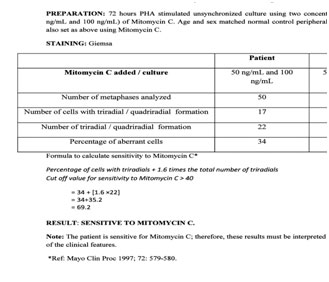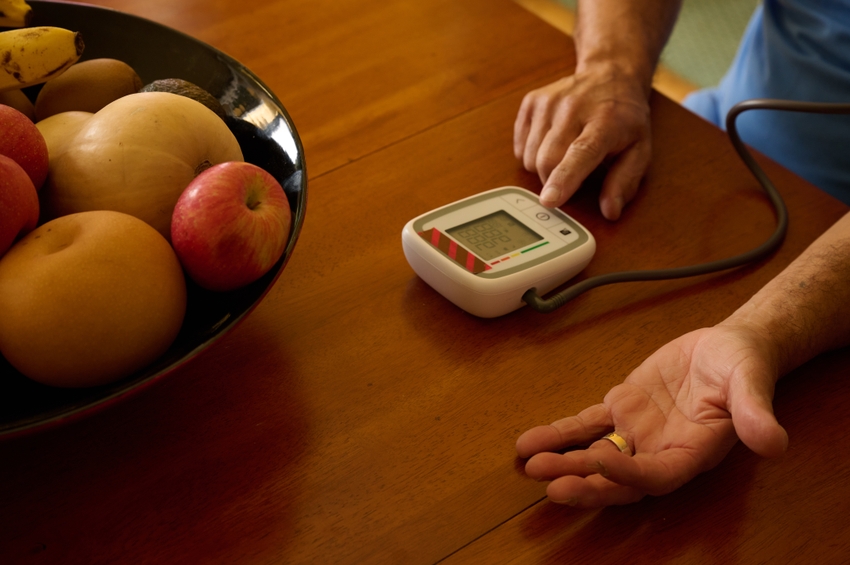New antibody therapy offers hope for fragile patients with Fanconi anemia – News-Medical

Report on a Novel Stem Cell Transplant Protocol and its Alignment with Sustainable Development Goals
Executive Summary
A Phase 1 clinical trial conducted at Stanford Medicine has demonstrated the success of a new antibody-based treatment for preparing patients for stem cell transplants. This innovative protocol eliminates the need for toxic busulfan chemotherapy and radiation, significantly advancing progress towards key Sustainable Development Goals (SDGs), particularly SDG 3 (Good Health and Well-being), SDG 9 (Industry, Innovation, and Infrastructure), and SDG 10 (Reduced Inequalities). The trial, focused on patients with the rare genetic disease Fanconi anemia, has shown exceptional outcomes, paving the way for safer and more accessible curative therapies.
Advancing SDG 3: Good Health and Well-being
The primary impact of this research is the significant improvement in health outcomes and patient safety, directly contributing to SDG 3. The new regimen addresses the high toxicity associated with conventional transplant procedures.
- Elimination of Toxic Conditioning: The protocol successfully replaced genotoxic chemotherapy (busulfan) and radiation with an antibody, briquilimab, which targets the CD117 protein on blood-forming stem cells. This reduces severe side effects and long-term health risks, such as secondary cancers, especially for vulnerable patients with DNA-repair disorders like Fanconi anemia.
- Successful Clinical Trial Outcomes:
- Three children with Fanconi anemia were treated under the new protocol.
- All participants received stem cells from a partially matched parent donor.
- Post-transplant, all three patients are doing well after two years of follow-up, with donor cells comprising nearly 100% of their bone marrow—a result that far exceeded initial expectations.
- The treatment has led to a dramatic improvement in quality of life, enabling patients to overcome fatigue and build stamina.
- Future Health Applications: Researchers anticipate this safer transplant model can be expanded to treat other genetic diseases, such as Diamond-Blackfan anemia, and potentially be adapted for elderly or fragile cancer patients who cannot tolerate high-intensity conditioning regimens.
Fostering SDG 9: Industry, Innovation, and Infrastructure
This breakthrough is a product of decades of sustained scientific research and innovation, highlighting the importance of investment in medical R&D infrastructure as outlined in SDG 9.
- Scientific Innovation: The development of the anti-CD117 antibody (briquilimab) is a culmination of foundational research at Stanford’s Institute for Stem Cell Biology and Regenerative Medicine. This targeted biological therapy represents a paradigm shift away from indiscriminate cytotoxic agents.
- Technological Advancement in Transplant Procedure: The protocol incorporates a second key innovation: the depletion of alpha/beta T-cells from donor marrow. This technique, developed by Dr. Alice Bertaina, minimizes the risk of graft-versus-host disease (GVHD), a life-threatening complication.
Promoting SDG 10: Reduced Inequalities
The new methodology directly addresses and reduces critical inequalities in access to life-saving medical treatments, a core target of SDG 10.
- Expanding Donor Access: By making transplants from partially matched (haploidentical) donors safer and more effective, the protocol dramatically expands the potential donor pool. Previously, 35-40% of patients in need of a transplant could not find a fully matched donor, a problem that disproportionately affects individuals from diverse ethnic backgrounds. This innovation ensures nearly every patient who needs a transplant can receive one.
- Inclusion of Vulnerable Populations: The reduced toxicity of the regimen makes it a viable option for patients previously considered too fragile for a standard transplant, including children with Fanconi anemia and potentially elderly cancer patients. This promotes equitable access to curative therapies across different age groups and health conditions.
Strengthening SDG 17: Partnerships for the Goals
The success of this clinical trial exemplifies the power of multi-stakeholder partnerships, a cornerstone of SDG 17, in accelerating medical progress.
- Cross-Sector Collaboration: The project involved a robust partnership between academic institutions (Stanford Medicine, University of California, San Francisco), research hospitals (St. Jude Children’s Research Hospital, Memorial Sloan Kettering Cancer Center), and the private sector (Jasper Therapeutics Inc., which supplied the antibody).
- Diverse Funding and Support: The trial was made possible through a combination of philanthropic support, state funding from the California Institute of Regenerative Medicine (CIRM), and support from patient advocacy groups like the Fanconi Cancer Foundation.
Analysis of Sustainable Development Goals in the Article
1. Which SDGs are addressed or connected to the issues highlighted in the article?
The article on the new antibody treatment for stem cell transplants connects to several Sustainable Development Goals (SDGs) by focusing on advancements in healthcare, innovation, reducing inequalities, and fostering partnerships.
- SDG 3: Good Health and Well-being: This is the most prominent SDG, as the article’s core subject is a medical breakthrough that improves the safety and effectiveness of stem cell transplants, directly enhancing patient health and quality of life.
- SDG 9: Industry, Innovation, and Infrastructure: The article details a significant scientific innovation resulting from decades of research. The development and clinical trial of the briquilimab antibody represent an upgrade in medical technology and infrastructure.
- SDG 10: Reduced Inequalities: The new treatment protocol addresses inequalities in healthcare access by expanding the pool of potential stem cell donors, making life-saving transplants available to more patients.
- SDG 17: Partnerships for the Goals: The success of this clinical trial is explicitly attributed to collaboration among multiple academic institutions, hospitals, a private company, and funding bodies, highlighting the importance of multi-stakeholder partnerships.
2. What specific targets under those SDGs can be identified based on the article’s content?
Based on the article’s content, several specific SDG targets can be identified:
- Target 3.4: By 2030, reduce by one-third premature mortality from non-communicable diseases through prevention and treatment and promote mental health and well-being.
- Explanation: Fanconi anemia is a non-communicable genetic disease that leads to premature death from bone marrow failure or cancer. The article states, “If they don’t get a transplant in time, Fanconi anemia patients’ bodies eventually will not make blood, so they die of bleeding or infections.” The new, safer transplant method is a direct treatment intervention to prevent this mortality. It also aims to reduce the high rate of secondary cancers, further contributing to this target.
- Target 3.8: Achieve universal health coverage, including … access to quality essential health-care services and access to safe, effective, quality and affordable essential medicines…
- Explanation: The research makes a critical healthcare service—stem cell transplantation—safer by eliminating “toxic busulfan chemotherapy or radiation.” It also makes it more accessible by allowing for transplants from half-matched donors, addressing a major barrier where “35% to 40% of patients who need the transplants… did not receive them because they lacked fully matched donors.”
- Target 9.5: Enhance scientific research, upgrade the technological capabilities of industrial sectors in all countries… encouraging innovation…
- Explanation: The article is a case study in enhancing scientific research. It describes how “decades of Stanford Medicine scientific advances” led to the development of a new antibody treatment (briquilimab). This represents a significant technological upgrade in transplant procedures, moving from toxic chemotherapy to a targeted antibody approach.
- Target 10.3: Ensure equal opportunity and reduce inequalities of outcome…
- Explanation: The innovation directly reduces an inequality of outcome in healthcare. Previously, a patient’s chance of receiving a transplant depended on finding a fully matched donor. The new protocol, which allows for half-matched donors (like a parent), ensures more equitable access. As Dr. Agarwal states, “We are expanding the donors for stem cell transplantation in a major way, so every patient who needs a transplant can get one.”
- Target 17.16: Enhance the Global Partnership for Sustainable Development, complemented by multi-stakeholder partnerships that mobilize and share knowledge, expertise, technology and financial resources…
- Explanation: The study is a clear example of a multi-stakeholder partnership. The article lists collaborators from “the University of California, San Francisco; Kaiser Permanente Bernard J. Tyson School of Medicine; St. Jude Children’s Research Hospital; Memorial Sloan Kettering Cancer Center; and Jasper Therapeutics Inc.” It also mentions funding from philanthropic sources and the California Institute of Regenerative Medicine, demonstrating a mobilization of knowledge and financial resources.
3. Are there any indicators mentioned or implied in the article that can be used to measure progress towards the identified targets?
The article provides several explicit and implicit indicators that can be used to measure progress:
- For Target 3.4 (Reducing premature mortality):
- Patient Survival and Well-being: The successful outcome for the three children two years post-transplant serves as a direct indicator. The story of Ryder Baker, whose stamina has “completely different now,” demonstrates improved well-being.
- Reduction in Secondary Cancer Rates: The article notes that “nearly all of these patients get secondary cancers by the time they’re 40,” and the researchers hope the new approach will “reduce those rates.” This is a measurable long-term indicator.
- For Target 3.8 (Access to quality care):
- Increased Transplant Accessibility: A key indicator is the reduction in the percentage of patients unable to find a donor, moving from “35% to 40% of patients” without access towards the goal that “every patient who needs a transplant can get one.”
- Elimination of Toxic Treatments: The successful replacement of “radiation and genotoxic chemotherapy called busulfan” with the antibody treatment is a clear indicator of improved safety and quality of care.
- For Target 9.5 (Enhancing research and innovation):
- Development of New Medical Protocols: The creation and successful phase 1 clinical trial of the new antibody regimen is a primary indicator of innovation. The plan for a “phase 2 trial” shows continued research.
- Scientific Publications: The publication of the trial results in the journal Nature Medicine is an indicator of peer-validated scientific advancement.
- For Target 10.3 (Reducing inequalities):
- Use of Half-Matched Donors: The successful use of cells from a parent (a half-match) for the transplants is a direct indicator of overcoming the inequality related to donor availability.
- For Target 17.16 (Partnerships):
- Number of Collaborating Institutions: The article explicitly lists the multiple academic, medical, and private sector partners involved, serving as a direct indicator of a multi-stakeholder partnership.
4. Table of SDGs, Targets, and Indicators
| SDGs | Targets | Indicators |
|---|---|---|
| SDG 3: Good Health and Well-being |
3.4: Reduce premature mortality from non-communicable diseases.
3.8: Achieve access to quality essential health-care services and safe, effective medicines. |
– Patient survival rates post-transplant. – Reduction in the incidence of secondary cancers. – Improved quality of life and physical stamina in patients. – Percentage of patients receiving a needed transplant. – Elimination of toxic chemotherapy/radiation from transplant protocols. |
| SDG 9: Industry, Innovation, and Infrastructure | 9.5: Enhance scientific research and upgrade technological capabilities. |
– Development and successful clinical trial of a new antibody treatment (briquilimab). – Publication of research in a high-impact scientific journal (Nature Medicine). |
| SDG 10: Reduced Inequalities | 10.3: Ensure equal opportunity and reduce inequalities of outcome. |
– Increased ability to perform transplants using half-matched donors (e.g., parents). – Reduction in the percentage of patients who cannot get a transplant due to lack of a fully matched donor. |
| SDG 17: Partnerships for the Goals | 17.16: Enhance multi-stakeholder partnerships. |
– Number of collaborating entities (academic, hospital, private sector) listed in the study. – Mobilization of funding from diverse sources (philanthropy, state institutes). |
Source: news-medical.net

What is Your Reaction?
 Like
0
Like
0
 Dislike
0
Dislike
0
 Love
0
Love
0
 Funny
0
Funny
0
 Angry
0
Angry
0
 Sad
0
Sad
0
 Wow
0
Wow
0













































































